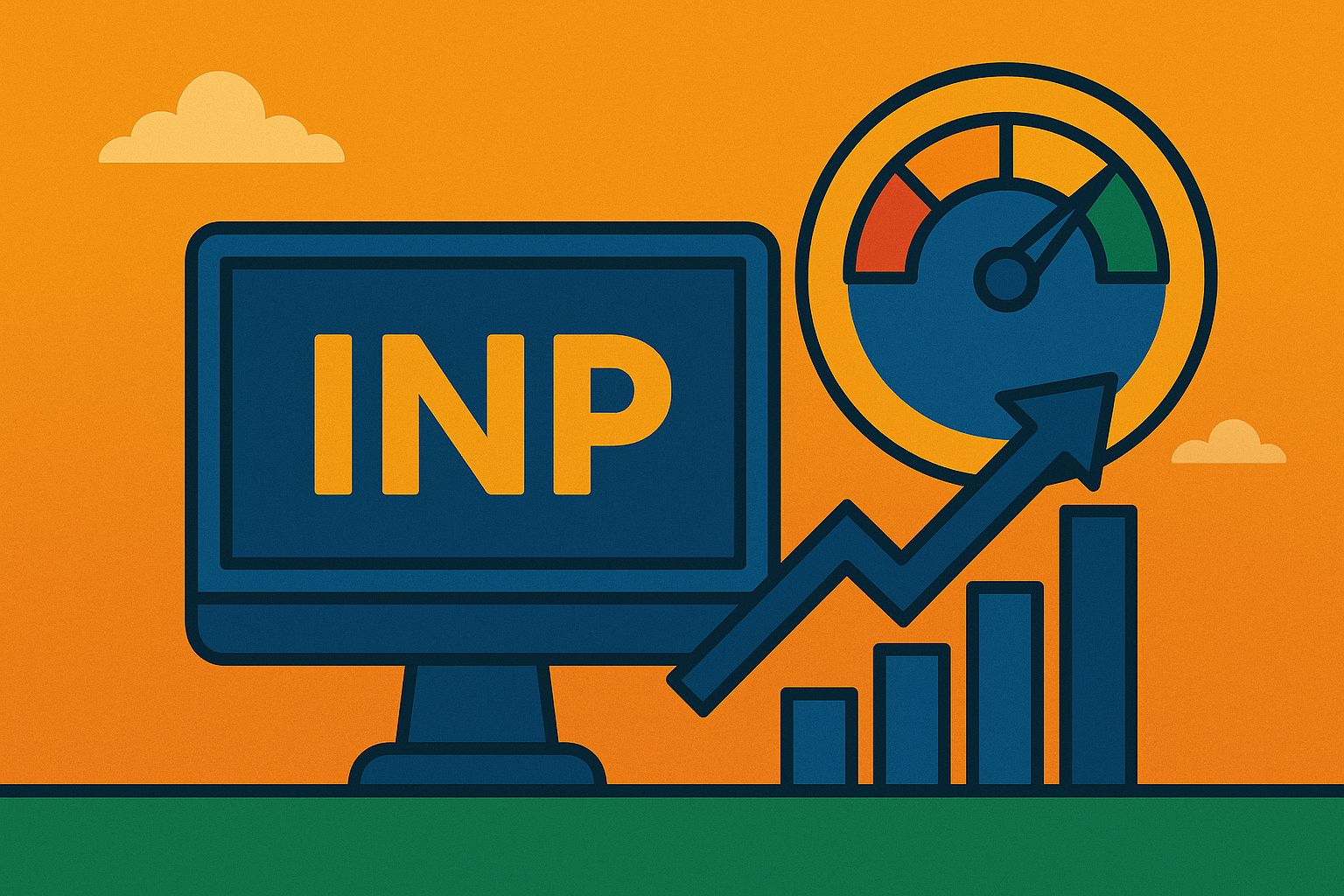In today’s rapidly evolving digital landscape, marketing professionals are increasingly challenged by a new priority: privacy compliance. As consumers become more aware of their digital footprints and governments introduce stricter data protection laws, privacy-compliant marketing has become an essential part of any robust marketing strategy. Navigating this domain successfully requires going beyond traditional tactics and adopting advanced marketing strategies for privacy compliance.
In this article, we will explore the latest trends, technologies, and strategies in privacy-compliant marketing that help businesses not only meet legal requirements but also earn consumer trust.
The Rise of Privacy Awareness in Marketing
The rise of privacy awareness in marketing is deeply rooted in the evolution of technology, consumer behavior, and regulatory frameworks that govern how data is collected, stored, and used. As technology has advanced, so too has the ability of companies to track consumer behavior across various digital touchpoints. However, this new found ability to harness data for targeted marketing has led to growing concerns about the ethical use of personal information, prompting both consumers and regulators to demand more privacy-compliant practices.
1. Consumer Awareness and Expectations
In recent years, consumers have become far more knowledgeable about how their data is being used, largely due to high-profile data breaches and growing media attention on the topic. Scandals involving major companies, such as the Cambridge Analytica incident where millions of Facebook profiles were harvested without consent, have amplified concerns. This incident, among others, significantly raised awareness of how much data is being shared and sold without user permission.
Modern consumers are now more selective in how they engage with brands. They expect greater transparency in terms of data collection and usage, preferring brands that offer a clear and trustworthy value exchange. This shift has made privacy awareness not just a legal or compliance issue but a key factor in brand loyalty and customer retention.
According to a Cisco Consumer Privacy Survey, 84% of consumers care about their data privacy, and a significant portion of them are willing to take actions such as abandoning a brand or switching to a competitor if they believe their personal information is being misused. This statistic highlights the critical role privacy awareness now plays in consumer decision-making.
As a result, marketing strategies must now align with these consumer expectations by integrating privacy as a core value, rather than viewing it as an afterthought or a regulatory checkbox.
2. The Impact of Data Breaches and Scandals
High-profile data breaches have played a monumental role in raising public awareness about privacy. For example, in the Equifax breach of 2017, sensitive information from over 147 million individuals was compromised, leading to widespread concern about data security. Such breaches have made it clear that personal data is valuable and that its misuse can have severe consequences, not only for consumers but also for companies.
Consumers now understand that their data is often being used for marketing, predictive analysis, and decision-making without their explicit knowledge. With this awareness comes an expectation that businesses handle data responsibly and offer transparency about how it’s being used. Failing to meet these expectations can result in significant reputational damage, legal ramifications, and a loss of consumer trust.
These breaches have also prompted government bodies to introduce stricter privacy laws to protect consumers, further pushing marketers to rethink how they collect, store, and use data. The rising frequency of data scandals has put the onus on businesses to not just meet the minimum regulatory standards but to go beyond them by actively investing in data protection measures and marketing transparency.
3. The Evolution of Privacy Laws and Regulations
To protect consumers from data misuse, a wave of new privacy regulations has emerged worldwide. These laws impose strict rules on how companies can collect, store, and use consumer data, making privacy a mandatory consideration for marketing departments.
- GDPR (General Data Protection Regulation): The GDPR, implemented in 2018, represents one of the most comprehensive privacy regulations to date, setting stringent guidelines for companies operating within the EU. Businesses are required to obtain clear consent from users before processing their data, and they must offer transparency about how that data will be used. Companies that fail to comply with GDPR risk substantial fines, up to €20 million or 4% of global annual turnover, whichever is higher.
- CCPA (California Consumer Privacy Act): Shortly after GDPR, the CCPA was introduced to give California residents greater control over their personal information. The CCPA allows users to opt out of the sale of their data and to request access to or deletion of their data. This law has set a precedent in the United States and has influenced other states to adopt similar regulations.
- LGPD (Lei Geral de Proteção de Dados): Brazil’s LGPD is another example of how privacy regulations are gaining global traction. It aligns closely with the GDPR in terms of requirements and has made privacy a critical issue for companies operating in Brazil.
These regulations have forced marketers to rethink how they approach data collection. Companies must now obtain explicit consent from users, and more importantly, they must give users control over their data, allowing them to opt out or request deletion of personal information.
Moreover, privacy laws like GDPR and CCPA impose obligations on companies to offer users clarity and control over their data. The move from implicit to explicit consent has placed the burden on marketers to ensure that their strategies are both transparent and accountable.
4. Consumers as Gatekeepers of Their Data
The evolving landscape of privacy laws has shifted the control of data back to the consumers, positioning them as gatekeepers of their own personal information. This shift has significant implications for marketers. The traditional practice of using third-party cookies to track users across websites is rapidly becoming obsolete. As a result, marketers need to focus on first-party data—data collected directly from consumers with their consent—rather than relying on third-party data from external sources.
Consumers are more aware than ever of how their data is being used and increasingly demand clear explanations before agreeing to share their information. They want to know:
- What type of data is being collected?
- How will the data be used?
- Who will have access to it?
- Can they opt out, and how?
Meeting these demands is no longer just about regulatory compliance; it’s about building trust. Companies that fail to respect consumer data privacy risk losing their customer base to competitors that prioritize privacy.
5. Privacy as a Differentiator in Marketing
As privacy concerns grow, companies are finding that data privacy can serve as a differentiator in the marketplace. Rather than viewing privacy regulations as a burden, savvy brands are using compliance as a competitive advantage. For instance:
- Apple has made data privacy a key selling point in its marketing campaigns. Their slogan “What happens on your iPhone, stays on your iPhone” positions the company as a privacy-first brand, giving it a competitive edge in a market where consumers are wary of data misuse.
- Mozilla, the company behind the Firefox browser, emphasizes privacy by default, with built-in tools that block third-party trackers. This approach has helped the company carve out a niche in a crowded browser market, appealing to consumers who prioritize privacy.
- ProtonMail, an encrypted email service, markets itself as the privacy-focused alternative to mainstream email providers like Gmail. By promoting its strong encryption and commitment to not selling user data, ProtonMail has gained a loyal following among privacy-conscious users.
These examples demonstrate that privacy can be a powerful brand differentiator. In a world where trust is a valuable commodity, brands that prioritize transparency and ethical data practices can win consumer loyalty and stand out from the competition.
6. The Decline of Third-Party Cookies and Its Impact on Marketing
Another major factor contributing to the rise of privacy awareness is the gradual phasing out of third-party cookies. Third-party cookies, once the cornerstone of digital advertising, are used by advertisers to track users across different websites and build detailed profiles based on their browsing behavior. However, these cookies have been criticized for infringing on user privacy by collecting data without explicit consent.
In response to growing privacy concerns, web browsers like Google Chrome, Safari, and Mozilla Firefox have implemented measures to restrict or block third-party cookies entirely. Google announced plans to phase out third-party cookies in 2024, a move that will have profound implications for the digital marketing industry.
The decline of third-party cookies has forced marketers to rethink how they collect and use data. Moving forward, brands will need to rely more heavily on first-party data—data collected directly from consumers with their consent—and zero-party data, which is data that users voluntarily share, such as preferences and intentions. By focusing on consent-driven data collection, brands can build stronger, more transparent relationships with their customers while still delivering personalized marketing experiences.
Strategies for Advanced Privacy Compliant Marketing
1. Zero-Party Data Collection: Putting Control in Consumers’ Hands
With the decline of third-party cookies and tighter data-sharing restrictions, businesses must now focus on zero-party data. This is data that consumers willingly and proactively share with brands. Examples include preference settings, purchase intentions, and feedback through surveys.
Collecting zero-party data gives consumers more control over their information, making them feel empowered while providing marketers with rich insights. It also eliminates concerns over third-party data collection, reducing the risk of privacy breaches.
To implement zero-party data effectively:
- Incentivize engagement: Offer value in exchange for consumer data, such as personalized offers or early access to products.
- Be transparent: Clearly communicate what data is being collected and how it will be used.
- Optimize the user experience: Make data-sharing processes user-friendly and unobtrusive, integrating them seamlessly into the customer journey.
2. Consent Management Platforms (CMPs)
Managing consent is one of the most critical aspects of privacy-compliant marketing. Consent Management Platforms (CMPs) help businesses collect, store, and manage user consents in compliance with privacy laws.
Advanced CMPs allow businesses to:
- Segment consents by region: Different users may be subject to different privacy laws based on their geographic location. CMPs ensure that the correct consent flows are used for each user.
- Provide granular control: Users should be able to manage their preferences on what data is collected and how it is used, giving them control over tracking cookies, email marketing preferences, and more.
- Track and update consents: As consumer preferences change, CMPs ensure that businesses stay updated and compliant with evolving requirements.
By integrating a CMP into your marketing stack, businesses can balance personalization with privacy compliance, ensuring that user data is handled with care and respect.
3. Data Anonymization and Pseudonymization
For businesses that require data-driven insights while minimizing privacy risks, data anonymization and pseudonymization are advanced techniques to consider.
- Anonymization: This process permanently removes identifiable information from data sets, ensuring that the information cannot be traced back to an individual. This technique is valuable for analytics, marketing automation, and reporting without violating privacy laws.
- Pseudonymization: While data remains identifiable through an external reference, personal identifiers are replaced with pseudonyms. This allows for data analysis and profiling while ensuring that raw personal data remains protected.
Incorporating these techniques allows marketers to continue refining their strategies and personalizing experiences without risking non-compliance or breaching customer trust.
4. First-Party Data Strategy
With the loss of third-party cookies, first-party data has emerged as a critical element of privacy-compliant marketing strategies. First-party data is information that a company collects directly from its audience. This includes email subscriptions, website interactions, social media engagement, and purchase history.
To maximize the value of first-party data:
- Invest in a Customer Data Platform (CDP): A CDP unifies all customer data into a single platform, providing a comprehensive view of each customer while keeping data secure and compliant with privacy regulations.
- Create personalized experiences: Use first-party data to craft tailored content, emails, and recommendations that respect user preferences.
- Leverage data insights responsibly: Analyze patterns without crossing boundaries. The goal is to offer value to users without infringing on their privacy.
Leveraging AI for Privacy-First Marketing
As privacy regulations tighten and consumer expectations around data usage evolve, the intersection of artificial intelligence (AI) and privacy-first marketing becomes a key area of focus. AI can provide marketers with enhanced insights, automation, and personalization capabilities, but it must be used in a way that respects and upholds data privacy standards. Advanced AI technologies offer solutions that help marketers balance these needs—empowering data-driven strategies while protecting consumer privacy.
1. AI-Driven Data Minimization
Data minimization is a core principle of modern privacy regulations, such as the GDPR, which requires companies to only collect and process the minimal amount of personal data necessary for a specific purpose. This principle aligns well with AI-driven data minimization techniques.
Traditionally, marketers might collect a broad range of user data to derive insights. However, AI can help refine this process by identifying the smallest data sets needed to achieve the same goals. Here’s how:
- Predictive Analytics with Less Data: AI-powered predictive models can analyze smaller, anonymized data sets to make accurate predictions about consumer behavior. These models use aggregated data patterns rather than personal identifiers, allowing marketers to anticipate customer needs without infringing on privacy.
- Dynamic Segmentation: AI can segment audiences in real-time based on fewer data points, such as behavioral patterns rather than personally identifiable information (PII). For instance, instead of needing an entire customer profile, AI might only require high-level actions like page visits, purchases, and interactions to generate effective marketing strategies.
By implementing AI-driven data minimization strategies, companies reduce the amount of personal data they collect and store, thereby decreasing privacy risks and demonstrating a commitment to data protection.
2. Privacy-Preserving Machine Learning (PPML)
In traditional machine learning models, vast amounts of consumer data are often centralized for training and improving algorithms. This centralization poses a privacy risk, as it creates a single point of failure where data can be exposed or misused. Privacy-Preserving Machine Learning (PPML) addresses this issue by allowing AI models to learn from data without compromising user privacy.
There are several emerging technologies and approaches within PPML that are particularly relevant to privacy-compliant marketing:
- Federated Learning: In federated learning, the AI model is trained across decentralized devices (such as users’ smartphones or edge devices), rather than aggregating data in a centralized repository. Each device contributes to the learning process by processing its own data locally and sending only the model updates (not the data itself) back to a central server. This ensures that personal data never leaves the user’s device, reducing privacy risks.
Example in Marketing: Imagine a recommendation engine that learns from users’ browsing habits. With federated learning, the AI could personalize recommendations based on behavior without sending sensitive browsing data to a central server. Each user’s device trains the model independently, ensuring data privacy while still improving the algorithm’s accuracy. - Differential Privacy: Another technique used in PPML is differential privacy, which adds “noise” or randomness to the data before it’s processed by an AI model. This ensures that individual data points cannot be traced back to specific users, even if the data set is accessed. Differential privacy is especially useful for aggregate analytics, where insights are derived from large groups of users rather than individuals.
Example in Marketing: A company might want to analyze the purchasing trends of its customers. By using differential privacy, the AI system can process aggregate data without revealing specific purchase details linked to individual users. This technique ensures that privacy is maintained, even when working with sensitive transactional data. - Homomorphic Encryption: This advanced cryptographic technique allows AI models to perform computations on encrypted data without needing to decrypt it first. The results are then decrypted by the data owner, ensuring that sensitive information remains protected throughout the process.
Example in Marketing: If a marketing team wanted to analyze customer data for targeted campaigns, they could use homomorphic encryption to process the data securely. The AI model could generate insights and recommendations while keeping the underlying data encrypted, reducing the risk of exposure.
3. AI for Consent and Preference Management
Managing user consent in compliance with privacy regulations like GDPR and CCPA is a complex task, especially when dealing with large data sets and multiple marketing channels. AI can streamline and automate the process of consent management, ensuring that businesses respect users’ privacy preferences without manual intervention.
AI can be integrated into Consent Management Platforms (CMPs) to:
- Automate Consent Flows: AI can track user preferences across multiple platforms (web, mobile, email, etc.) and ensure that personalized marketing is only delivered to users who have provided explicit consent. If a user withdraws consent, AI systems can automatically update all associated databases and marketing platforms, ensuring that the user’s preferences are respected immediately.
- Analyze Consent Data for Trends: AI can also analyze consent data to identify trends and patterns. For example, if users from a specific demographic are consistently opting out of data collection, AI can flag this as an area for improvement. Marketing teams can then adjust their messaging or data collection practices to better align with consumer expectations.
- Adaptive Consent Models: AI-driven systems can create adaptive consent models that tailor data collection requests based on user behavior. For instance, if a user shows high engagement with certain types of content, the system can dynamically request consent for related data collection in a way that feels organic and relevant, improving opt-in rates.
4. AI in Personalized, Privacy-Respecting Marketing
Personalization has long been the holy grail of marketing, but achieving deep personalization without infringing on user privacy is a challenge. Advanced AI techniques enable businesses to deliver hyper-personalized experiences without compromising compliance.
- Content Personalization with Minimal Data: AI-driven algorithms can personalize content recommendations, email campaigns, and product suggestions using limited, anonymized data. By leveraging behavior-based triggers rather than PII, marketers can offer highly relevant experiences while maintaining privacy compliance.
Example in Marketing: AI can analyze a user’s in-app behavior, such as product page views or click-through rates, to recommend similar items. These recommendations are made without accessing sensitive user information, instead relying on anonymized data sets that still provide value to the user. - Real-Time Personalization with Privacy Safeguards: AI-powered systems can adjust real-time offers or website experiences based on current user behavior, using only the data collected during that specific session. This approach avoids long-term storage of personal data while still providing relevant, dynamic content.
Example in Marketing: An eCommerce platform might use AI to detect when a user is browsing a particular product category and display real-time discounts or related product suggestions, without storing any historical browsing data. Once the session ends, the data is discarded, ensuring compliance with privacy laws while still offering personalized engagement.
5. AI in Privacy-First Behavioral Analytics
AI is a powerful tool for behavioral analytics, helping marketers understand user journeys and optimize campaigns. However, traditional behavioral analytics often rely on tracking individual users across websites, which raises privacy concerns. AI can help businesses perform behavioral analytics without violating user privacy by focusing on group behaviors rather than individual profiles.
- Aggregate Behavioral Analysis: AI systems can aggregate and anonymize user behavior data to identify patterns and trends without needing to track specific individuals. For example, AI can analyze how a group of users interacts with a website, such as which pages they visit or which actions lead to conversions, all while keeping the users’ identities anonymous.
Example in Marketing: A marketing team can use AI to analyze the behavior of visitors to a landing page. Rather than focusing on individual users, the AI will track aggregate behavior—such as how many visitors clicked a CTA button—allowing the team to optimize the page layout while maintaining privacy. - AI-Driven Audience Insights Without PII: AI can generate insights about broader audience segments (such as geographic location or device type) without the need for PII. These insights can be used to inform targeted marketing strategies that are privacy-compliant and effective.
Example in Marketing: An AI tool could analyze the behavior of mobile users from a specific region and recommend a localized marketing campaign. No individual user data is collected or stored, ensuring compliance while still driving campaign success.
Conclusion
In a world where data privacy is no longer optional, businesses must go beyond basic compliance. Advanced marketing strategies for privacy compliance demand a proactive, consumer-centric approach that prioritizes transparency, user consent, and data minimization. By embracing zero-party data, consent management platforms, AI-driven solutions, and a robust first-party data strategy, companies can navigate the complexities of privacy-compliant marketing and build lasting trust with their customers. Success in this area is not just about avoiding fines—it’s about creating a brand that stands for ethical, transparent, and user-first practices.




